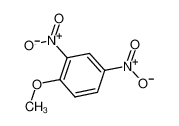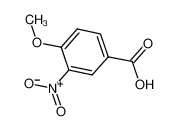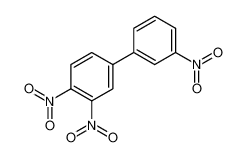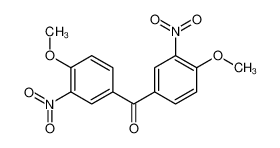1.Identification
1.1 GHS Product identifier
| Product name | nitric acid |
|---|
1.2 Other means of identification
| Product number | - |
|---|---|
| Other names | Rfna |
1.3 Recommended use of the chemical and restrictions on use
| Identified uses | For industry use only. Processing Aids and Additives |
|---|---|
| Uses advised against | no data available |
1.4 Supplier's details
| Company | MOLBASE (Shanghai) Biotechnology Co., Ltd. |
|---|---|
| Address | Floor 4 & 5, Building 12, No. 1001 North Qinzhou Road, Xuhui District, Shanghai, China |
| Telephone | +86(21)64956998 |
| Fax | +86(21)54365166 |
1.5 Emergency phone number
| Emergency phone number | +86-400-6021-666 |
|---|---|
| Service hours | Monday to Friday, 9am-5pm (Standard time zone: UTC/GMT +8 hours). |
2.Hazard identification
2.1 Classification of the substance or mixture
Oxidizing liquids, Category 2
Skin corrosion, Category 1A
2.2 GHS label elements, including precautionary statements
| Pictogram(s) | 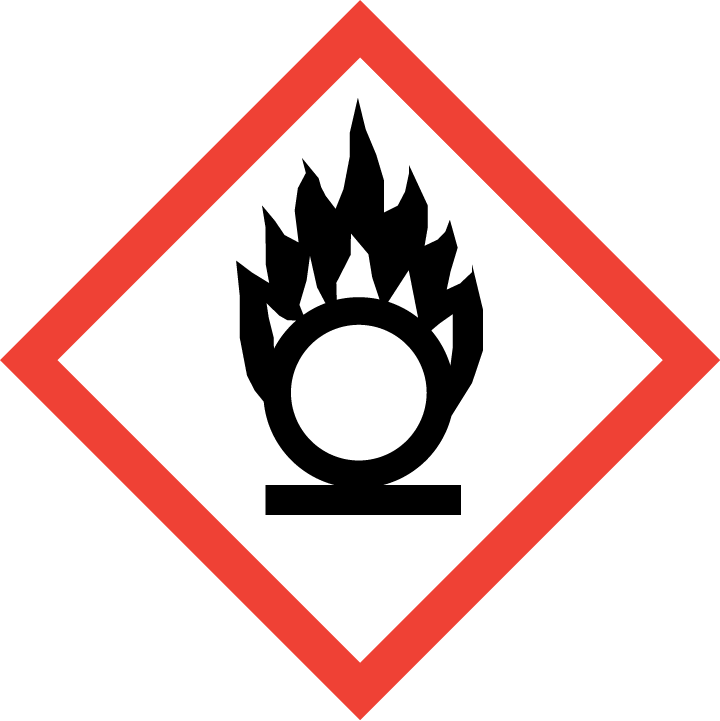  |
|---|---|
| Signal word | Danger |
| Hazard statement(s) | H272 May intensify fire; oxidizer H314 Causes severe skin burns and eye damage |
| Precautionary statement(s) | |
| Prevention | P210 Keep away from heat, hot surfaces, sparks, open flames and other ignition sources. No smoking. P220 Keep away from clothing and other combustible materials. P280 Wear protective gloves/protective clothing/eye protection/face protection. P260 Do not breathe dust/fume/gas/mist/vapours/spray. P264 Wash ... thoroughly after handling. |
| Response | P370+P378 In case of fire: Use ... to extinguish. P301+P330+P331 IF SWALLOWED: Rinse mouth. Do NOT induce vomiting. P303+P361+P353 IF ON SKIN (or hair): Take off immediately all contaminated clothing. Rinse skin with water [or shower]. P363 Wash contaminated clothing before reuse. P304+P340 IF INHALED: Remove person to fresh air and keep comfortable for breathing. P310 Immediately call a POISON CENTER/doctor/… P321 Specific treatment (see ... on this label). P305+P351+P338 IF IN EYES: Rinse cautiously with water for several minutes. Remove contact lenses, if present and easy to do. Continue rinsing. |
| Storage | P405 Store locked up. |
| Disposal | P501 Dispose of contents/container to ... |
2.3 Other hazards which do not result in classification
none
3.Composition/information on ingredients
3.1 Substances
| Chemical name | Common names and synonyms | CAS number | EC number | Concentration |
|---|---|---|---|---|
| nitric acid | nitric acid | 7697-37-2 | none | 100% |
4.First-aid measures
4.1 Description of necessary first-aid measures
General advice
Consult a physician. Show this safety data sheet to the doctor in attendance.
If inhaled
Fresh air, rest. Half-upright position. Artificial respiration may be needed. Refer immediately for medical attention.
In case of skin contact
Wear protective gloves when administering first aid. First rinse with plenty of water for at least 15 minutes, then remove contaminated clothes and rinse again. Refer immediately for medical attention .
In case of eye contact
Rinse with plenty of water for several minutes (remove contact lenses if easily possible). Refer immediately for medical attention.
If swallowed
Rinse mouth. Give nothing to drink. Do NOT induce vomiting. Refer immediately for medical attention.
4.2 Most important symptoms/effects, acute and delayed
Excerpt from ERG Guide 157 [Substances - Toxic and/or Corrosive (Non-Combustible / Water-Sensitive)]: TOXIC; inhalation, ingestion or contact (skin, eyes) with vapors, dusts or substance may cause severe injury, burns or death. Reaction with water or moist air may release toxic, corrosive or flammable gases. Reaction with water may generate much heat that will increase the concentration of fumes in the air. Fire will produce irritating, corrosive and/or toxic gases. Runoff from fire control or dilution water may be corrosive and/or toxic and cause pollution. (ERG, 2016)
4.3 Indication of immediate medical attention and special treatment needed, if necessary
Immediate first aid: Ensure that adequate decontamination has been carried out. If patient is not breathing, start artificial respiration, preferably with a demand-valve resuscitator, bag-valve-mask device, or pocket mask, as trained. Perform CPR as necessary. Immediately flush contaminated eyes with gently flowing water. Do not induce vomiting. If vomiting occurs, lean patient forward or place on left side (head-down position, if possible) to maintain an open airway and prevent aspiration. Keep patient quiet and maintain normal body temperature. Obtain medical attention. /Inorganic acids and related compounds/
5.Fire-fighting measures
5.1 Extinguishing media
Suitable extinguishing media
Approach fire from upwind to avoid hazardous vapors & toxic decomposition products. Use flooding quantities of water as spray or fog. Use water spray to keep fire-exposed containers cool. Extinguish fire using agent suitable for surrounding fire.
5.2 Specific hazards arising from the chemical
Excerpt from ERG Guide 157 [Substances - Toxic and/or Corrosive (Non-Combustible / Water-Sensitive)]: Non-combustible, substance itself does not burn but may decompose upon heating to produce corrosive and/or toxic fumes. For UN1796, UN1826, UN2031 at high concentrations and for UN2032, these may act as oxidizers, also consult ERG Guide 140. Vapors may accumulate in confined areas (basement, tanks, hopper/tank cars, etc.). Substance may react with water (some violently), releasing corrosive and/or toxic gases and runoff. Contact with metals may evolve flammable hydrogen gas. Containers may explode when heated or if contaminated with water. (ERG, 2016)
5.3 Special protective actions for fire-fighters
Wear self-contained breathing apparatus for firefighting if necessary.
6.Accidental release measures
6.1 Personal precautions, protective equipment and emergency procedures
Use personal protective equipment. Avoid dust formation. Avoid breathing vapours, mist or gas. Ensure adequate ventilation. Evacuate personnel to safe areas. Avoid breathing dust. For personal protection see section 8.
6.2 Environmental precautions
Evacuate danger area! Consult an expert! Personal protection: chemical protection suit including self-contained breathing apparatus. Do NOT absorb in saw-dust or other combustible absorbents. Ventilation. Collect leaking liquid in sealable containers. Cautiously neutralize remainder with sodium carbonate. Then wash away with plenty of water.
6.3 Methods and materials for containment and cleaning up
Spilled nitric acid must not be absorbed with sawdust or other flammable material (because of the fire hazard); instead, its spread must be prevented by the construction of earth barriers.
7.Handling and storage
7.1 Precautions for safe handling
Avoid contact with skin and eyes. Avoid formation of dust and aerosols. Avoid exposure - obtain special instructions before use.Provide appropriate exhaust ventilation at places where dust is formed. For precautions see section 2.2.
7.2 Conditions for safe storage, including any incompatibilities
Separated from combustible substances, reducing agents, bases, organic chemicals and food and feedstuffs. Cool. Dry. Keep in a well-ventilated room. Store only in original container.As a rule, nitric acid is stored in stainless steel tanks and transported in stainless steel containers.
8.Exposure controls/personal protection
8.1 Control parameters
Occupational Exposure limit values
Recommended Exposure Limit: 10 Hr Time-Weighted Avg: 2 ppm (5 mg/cu m).
Recommended Exposure Limit: 15 Min Short-Term Exposure Limit: 4 ppm (10 mg/cu m).
Biological limit values
no data available
8.2 Appropriate engineering controls
Handle in accordance with good industrial hygiene and safety practice. Wash hands before breaks and at the end of workday.
8.3 Individual protection measures, such as personal protective equipment (PPE)
Eye/face protection
Safety glasses with side-shields conforming to EN166. Use equipment for eye protection tested and approved under appropriate government standards such as NIOSH (US) or EN 166(EU).
Skin protection
Wear impervious clothing. The type of protective equipment must be selected according to the concentration and amount of the dangerous substance at the specific workplace. Handle with gloves. Gloves must be inspected prior to use. Use proper glove removal technique(without touching glove's outer surface) to avoid skin contact with this product. Dispose of contaminated gloves after use in accordance with applicable laws and good laboratory practices. Wash and dry hands. The selected protective gloves have to satisfy the specifications of EU Directive 89/686/EEC and the standard EN 374 derived from it.
Respiratory protection
Wear dust mask when handling large quantities.
Thermal hazards
no data available
9.Physical and chemical properties
| Physical state | Colourless clear liquid |
|---|---|
| Colour | Transparent, colorless, or yellowish, fuming, hygroscopic, corrosive liquid |
| Odour | Characteristic choking odor |
| Melting point/ freezing point | -42ºC |
| Boiling point or initial boiling point and boiling range | 120.5°C(lit.) |
| Flammability | Noncombustible Liquid, but increases the flammability of combustible materials.Not combustible but enhances combustion of other substances. Gives off irritating or toxic fumes (or gases) in a fire. |
| Lower and upper explosion limit / flammability limit | Not combustible |
| Flash point | 120.5ºC |
| Auto-ignition temperature | no data available |
| Decomposition temperature | no data available |
| pH | no data available |
| Kinematic viscosity | 1.092 mPa.s at 0°C; 0.746 mPa.s at 25°C; 0.617 mPa.s at 40°C |
| Solubility | In water:>100 g/100 mL (20 ºC) |
| Partition coefficient n-octanol/water (log value) | -0.21 |
| Vapour pressure | 8 mm Hg ( 20 °C) |
| Density and/or relative density | 1.400g/cm3at 25°C |
| Relative vapour density | 1 (vs air) |
| Particle characteristics | no data available |
10.Stability and reactivity
10.1 Reactivity
no data available
10.2 Chemical stability
Stable under recommended storage conditions.
10.3 Possibility of hazardous reactions
Contact of concentrated nitric acid with combustible materials may increase the hazard from fire and may lead to an explosion.NITRIC ACID, RED FUMING is a powerful oxidizing agent and nitrating agent. Accelerates the burning of combustible material and may cause charring and then ignition of combustible materials. May ignite alcohols, amines, ammonia, beryllium alkyls, boranes, dicyanogen, hydrazines, hydrocarbons, hydrogen, nitroalkanes, powdered metals, silanes, or thiols on contact [Bretherick 1979. p.174]. Can react violently with finely divided antimony [Pascal 10:504. 1931-34]. Reacts violently with bromine pentafluoride [Mellor 2, Supp. 1:172. 1956]. Reacts with hydrogen selenide and hydrogen sulfide with incandescence [Berichte 3:658]. Mixtures with finely divided magnesium are explosive [Pieters 1957 p. 28]. Oxidizes magnesium phosphide with incandescence [Mellor 8:842. 1946-47]. Mixtures with acetic anhydride containing over 50% nitric acid by mass may act as detonating explosives [BCISC 42:2. 1971]. An etching agent prepared with equal portions of acetone, nitric acid, and 75% aqueous acetic acid exploded four hours after it was prepared and placed in a closed bottle. The explosive material may have been tetranitromethane [Chem. Eng. News 38: 56. 1960]. Reacts violently with phosphine [Edin. Roy. Soc. 13:88. 1835]. Explodes in contact with phosphorus trichloride [Comp. Rend. 28:86]. Reacts exothermically with phthalic acid or phthalic anhydride in the presence of sulfuric acid to give potentially explosive phthaloyl nitrates or nitrites or nitro derivatives of these compounds [Chem. & Ind. 20:790. 1972]. Reacts energetically with sodium azide [Mellor 8, Supp 2:315. 1967]. Reacts with uranium with explosive violence [Katz and Rabinowitch 1951].
10.4 Conditions to avoid
no data available
10.5 Incompatible materials
Reacts violently with combustible or readily oxidizable materials such as alcohols, turpentine, charcoal, organic refuse. Reacts with most metals to release hydrogen gas.
10.6 Hazardous decomposition products
On exposure to atmospheric humidity or heat there is decomposition with the formation of nitrogen peroxide.
11.Toxicological information
Acute toxicity
- Oral: no data available
- Inhalation: LC50 Sheep inhalation 0.004 mg/L 4 hr
- Dermal: no data available
Skin corrosion/irritation
no data available
Serious eye damage/irritation
no data available
Respiratory or skin sensitization
no data available
Germ cell mutagenicity
no data available
Carcinogenicity
no data available
Reproductive toxicity
no data available
STOT-single exposure
no data available
STOT-repeated exposure
no data available
Aspiration hazard
no data available
12.Ecological information
12.1 Toxicity
- Toxicity to fish: no data available
- Toxicity to daphnia and other aquatic invertebrates: no data available
- Toxicity to algae: no data available
- Toxicity to microorganisms: no data available
12.2 Persistence and degradability
no data available
12.3 Bioaccumulative potential
no data available
12.4 Mobility in soil
... Nitric acid ... reduced the amount of carbon mineralized ... in soil amended with 1% glucose ... than did hydrogen sulfate.
12.5 Other adverse effects
no data available
13.Disposal considerations
13.1 Disposal methods
Product
The material can be disposed of by removal to a licensed chemical destruction plant or by controlled incineration with flue gas scrubbing. Do not contaminate water, foodstuffs, feed or seed by storage or disposal. Do not discharge to sewer systems.
Contaminated packaging
Containers can be triply rinsed (or equivalent) and offered for recycling or reconditioning. Alternatively, the packaging can be punctured to make it unusable for other purposes and then be disposed of in a sanitary landfill. Controlled incineration with flue gas scrubbing is possible for combustible packaging materials.
14.Transport information
14.1 UN Number
| ADR/RID: UN2031 | IMDG: UN2031 | IATA: UN2031 |
14.2 UN Proper Shipping Name
| ADR/RID: NITRIC ACID, other than red fuming, with more than 70% nitric acid |
| IMDG: NITRIC ACID, other than red fuming, with more than 70% nitric acid |
| IATA: NITRIC ACID, other than red fuming, with more than 70% nitric acid |
14.3 Transport hazard class(es)
| ADR/RID: 8 | IMDG: 8 | IATA: 8 |
14.4 Packing group, if applicable
| ADR/RID: III | IMDG: III | IATA: III |
14.5 Environmental hazards
| ADR/RID: no | IMDG: no | IATA: no |
14.6 Special precautions for user
no data available
14.7 Transport in bulk according to Annex II of MARPOL 73/78 and the IBC Code
no data available
15.Regulatory information
15.1 Safety, health and environmental regulations specific for the product in question
| Chemical name | Common names and synonyms | CAS number | EC number |
|---|---|---|---|
| nitric acid | nitric acid | 7697-37-2 | none |
| European Inventory of Existing Commercial Chemical Substances (EINECS) | Listed. | ||
| EC Inventory | Listed. | ||
| United States Toxic Substances Control Act (TSCA) Inventory | Listed. | ||
| China Catalog of Hazardous chemicals 2015 | Listed. | ||
| New Zealand Inventory of Chemicals (NZIoC) | Listed. | ||
| Philippines Inventory of Chemicals and Chemical Substances (PICCS) | Listed. | ||
| Vietnam National Chemical Inventory | Listed. | ||
| Chinese Chemical Inventory of Existing Chemical Substances (China IECSC) | Listed. | ||
16.Other information
Information on revision
| Creation Date | Aug 16, 2017 |
|---|---|
| Revision Date | Aug 16, 2017 |
Abbreviations and acronyms
- CAS: Chemical Abstracts Service
- ADR: European Agreement concerning the International Carriage of Dangerous Goods by Road
- RID: Regulation concerning the International Carriage of Dangerous Goods by Rail
- IMDG: International Maritime Dangerous Goods
- IATA: International Air Transportation Association
- TWA: Time Weighted Average
- STEL: Short term exposure limit
- LC50: Lethal Concentration 50%
- LD50: Lethal Dose 50%
- EC50: Effective Concentration 50%
References
- IPCS - The International Chemical Safety Cards (ICSC), website: http://www.ilo.org/dyn/icsc/showcard.home
- HSDB - Hazardous Substances Data Bank, website: https://toxnet.nlm.nih.gov/newtoxnet/hsdb.htm
- IARC - International Agency for Research on Cancer, website: http://www.iarc.fr/
- eChemPortal - The Global Portal to Information on Chemical Substances by OECD, website: http://www.echemportal.org/echemportal/index?pageID=0&request_locale=en
- CAMEO Chemicals, website: http://cameochemicals.noaa.gov/search/simple
- ChemIDplus, website: http://chem.sis.nlm.nih.gov/chemidplus/chemidlite.jsp
- ERG - Emergency Response Guidebook by U.S. Department of Transportation, website: http://www.phmsa.dot.gov/hazmat/library/erg
- Germany GESTIS-database on hazard substance, website: http://www.dguv.de/ifa/gestis/gestis-stoffdatenbank/index-2.jsp
- ECHA - European Chemicals Agency, website: https://echa.europa.eu/





